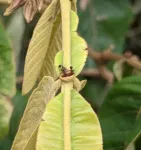(Press-News.org) □ The research team led by Professor Hongsoo Choi from DGIST (President Kuk Yang) in the Department of Robotics and Mechatronics Engineering has developed a microrobot capable of forming neural networks and sectioning hippocampal tissues in an in vitro environment in an ex vivo[1] state. Through the joint research with the team led by Dr. Jongcheol Rah from Korea Brain Research Institute, the possibility of analyzing structurally and functionally connected neural networks using a microrobot in an in-vitro environment during cell delivery and transplantation has been confirmed. The research findings are expected to be applied in various fields, including neural networks, cell therapy products, and regenerative medicine.
□ Cell therapy products and cell delivery technology have been developed to regenerate nerve cells damaged by diseases; in recent years, various technologies involving microrobots capable of precise, minimally invasive[2] cell delivery has been gaining recognition. Previous studies on cell delivery and neural network connections using microrobots only verified structural and functional connections of cells at the cell level.
□ The research team led by Professor Choi used microrobots in which neural network connection can be practically applied. This technology used microrobots to enable the analysis of neural networks functionally connected in an ex vivo environment and cell delivery; the brain tissue of a laboratory mouse was used to conduct the experiment.
□ The research team first attached superparamagnetic[3] iron oxide nanoparticles to the principal nerve cells of the hippocampus of the laboratory mouse to fabricate the Mag-Neurobot in a three-dimensional spherical form. Magnetic nanoparticles were attached to the outside of the robot so that the robot could move to a desired location by reacting to external magnetic fields. Safety was also verified via a biocompatibility test, in which the magnetism of the robot did not affect the growth of nerve cells.
□ The research team placed the microrobot in the hippocampus tissue section of the mouse through magnetic field control. Through immunofluorescence staining[4], the team observed that the cells in the microrobot and the cells in the hippocampus tissue section were structurally connected through neurites.
□ Furthermore, a microelectrode array (MEA) was used to stimulate the nerve cells in the microrobot to determine whether the nerve cells delivered by the microrobot exhibits typical electrophysiological characteristics. It was verified that electric signals are typically propagated through the nerve cells within the hippocampus tissue section. Accordingly, the research team confirmed that the nerve cells delivered by the microrobot could functionally form cells and neural networks inside the hippocampus tissue section of a laboratory mouse. In addition, the team demonstrated that the microrobot could perform the roles of delivering nerve cells and forming artificial neural networks.
□ Dr. Choi of DGIST said “We have proven that a microrobot and nerve tissues of a mouse brain can be functionally connected through an electrophysiological analysis” and added, “the technology developed in this study is expected to be utilized for verifying a precisely targeted treatment in neurological disorder and cell therapy fields.”
□ This study was supported by NSCN, NRF, and the Ministry of Science and ICT, and the research findings have been published online in Advanced Materials (JSR IF 32.086, top 2.1% in the field), one of the most highly rated journals in the field of materials, on February 15th (Wed.).
Correspondence Author E-mail : mems@dgist.ac.kr
[1] Ex vivo: Removing organs or tissues outside the body for treatment purposes and then returning them to the original position
[2] Minimally invasive: Minimizing the incision area to reduce the physical burden of a patient
[3] Superparamagnetism: Spins are aligned in the same direction, but the spins are not aligned overall even when a magnetic field is applied.
[4] Immunofluorescence staining: Visualization technology used for determining the location within a cell of specific proteins using the antibody of a specific molecule, often a protein, in cells or tissues.
END
Can we connect to a virtual world as in the movie “The Matrix”? Microrobot technology has been developed for externally connecting in vivo neural networks.
2023-03-31
ELSE PRESS RELEASES FROM THIS DATE:
DGIST student startups received the Grand Prize and Excellence Award in the “LAB Start-up 2023” battle
2023-03-31
□ DGIST (President Kuk Yang) announced on March 7, 2023, that student startups, CURE and TIA, received the Grand Prize and Excellence Award, respectively, in the “LAB Start-up 2023” which is sponsored by the Ministry of Science and ICT and supervised by Commercialization Promotion Agency for R&D Outcome (COMPA) and Korea Entrepreneurship Foundation.
□ This event, which was held under the theme of "Scientific Technology, the Advocate of Entrepreneurship," involved IR and exhibitions of 146 teams that have been challenged to start a business through the ...
Professor Jong-Sung Yu’s team at DGIST develops a method for carbon support synthesis with higher stability and durability of fuel cell catalysts
2023-03-31
□ The research team led by Professor Jong-Sung Yu of the Department of Energy Science and Engineering at DGIST (President Kook Yang) has developed a low-temperature method to synthesize a highly graphitized[1] carbon support[2] that will greatly improve the lifespan of hydrogen fuel-cells[3]. They expect that the results of this study will greatly increase the possibility of commercialization by being used in fuel cells for vehicles, batteries for water electrolysis, and drones.
□ The importance of hydrogen fuel-cells is increasing with the burgeoning need for eco-friendly energy. Therefore, studies to improve the performance and lifespan of hydrogen fuel-cells ...
New trials aim to improve quality of life for autistic people as University of Warwick embraces neurodiversity this autism awareness month
2023-03-31
The University of Warwick is proud to stand with neurodiverse communities during Autism Awareness Month. This month, the University aims to raise autism awareness and acceptance, while celebrating the diversity of all individuals that make up the University of Warwick community. According to the National Autistic Society, there are around 700,000 autistic people in the UK.
As part of ongoing research into the best way to support neurodiverse individuals, academics at the Centre for Educational Development, Appraisal and Research (CEDAR) are launching two clinical trials and are encouraging autistic adults to consider ...
Smart robots to work with children to greatly improve human-machine communication
2023-03-31
A team of experts at The University of Manchester has been awarded major funding to help design smarter robots that will have more meaningfully dialogue with humans after developing improved insight into our inner feelings through language.
The European Research Council (ERC) has awarded Professor Angelo Cangelosi, co-director of the Manchester Centre for Robotics and AI, a total of €2.5million as part of the eTALK project.
The Manchester research team will combine expertise in AI ...
Latinx students reported higher depression and anxiety symptoms than other students during the pandemic
2023-03-31
Latinx children in the US experienced higher rates of depression and anxiety during the Covid-19 pandemic, a new study shows, as experts state the “pressing need” to examine the long-term impact.
Findings, published today in the peer-reviewed Journal of Clinical Child & Adolescent Psychology, follow the examination of early adolescent school data from the first two years of the pandemic, compared to pre-pandemic levels.
The results show Latinx students were 1.5 to 2 times more likely to present with risk for both depression and anxiety during every academic year cohort assessed.
The highest maladjustment was found among Latinx girls and gender non-conforming/binary ...
UC study: Engaging in civic leadership empowers refugees, immigrants
2023-03-31
Research led by a University of Cincinnati doctoral student shows that immigrants and refugees who participated in a civic leadership program felt more empowered after learning about their rights, civic entitlements and the social, cultural, and political context of Cincinnati.
“The most salient change participants reported in connection to their involvement in the program were changes in consciousness related to power, rights and opportunities which immigrants and refugees are entitled to,” says ...
Alcohol increases risk for gun-involved suicide among Americans
2023-03-30
TORONTO, March 30, 2023 – A CAMH-led study just published in the journal JAMA Network Open has found that the probability of using a gun as a means of suicide among Americans increases the more alcohol they drink.
The study looked at all suicides in a national surveillance system in the United States over a 17-year period for people 18 and older who had alcohol in their system at the time of death. It found that the more alcohol they drank, the greater the probability that they would use a gun as the means of suicide, highlighting the need ...
White-tailed deer blood kills bacteria that causes Lyme disease
2023-03-30
As tick season kicks in across the country, the executive director of the University of Massachusetts Amherst-based New England Center of Excellence in Vector-Borne Diseases (NEWVEC) and his team have completed research that offers a promising lead in the fight against Lyme disease.
The study, published recently in the journal Vector-borne and Zoonotic Diseases, demonstrates that the blood of the white-tailed deer kills the corkscrew-shaped bacterium that causes Lyme disease, a potentially debilitating illness. The Centers for Disease Control and Prevention (CDC) estimates that each year some 476,000 people are diagnosed with and treated for Lyme, the ...
Kessler Foundation scientists receive $500,000 in grants to address early intervention after spinal cord injury
2023-03-30
East Hanover, NJ – March 30, 2023 –Three Kessler Foundation scientists have received grants totaling $500,000 from the New Jersey Commission on Spinal Cord Research to advance exploratory pilot studies in early intervention after spinal cord injury. Two studies will focus on areas of rehabilitation using spinal cord transcutaneous stimulation and another will test the impact of a BrainHQ cognitive training program in improving processing speed abilities shortly after SCI.
Fan Zhang, PhD, research scientist in the ...
New procedure helps patients avoid leg amputation
2023-03-30
More than 75% of patients facing amputation from the most severe form of peripheral artery disease were able to keep their limb after an innovative treatment as part of a multicenter study published in the New England Journal of Medicine.
The alternative to amputation, known as “limb salvage,” for patients with chronic limb-threatening ischemia (CLTI) came from the PROMISE II U.S. clinical trial assessing LimFlow technology and its use in performing transcatheter arterialization of the deep vein system.
The trial completed recently, and results were formally presented at the VIVA (Vascular InterVentional Advances) meeting in Las ...








